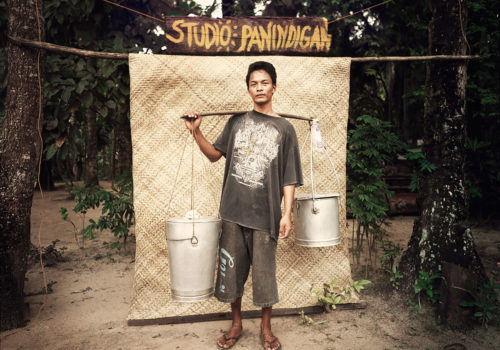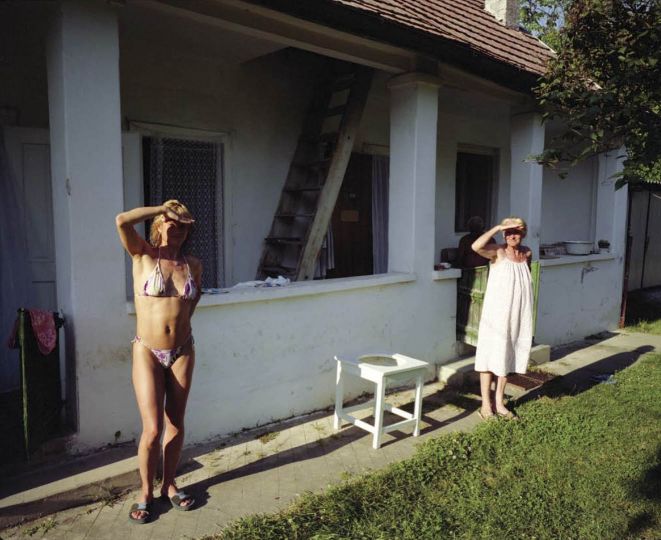In Tagalog, the national language of the Philippines, panindigan means: to uphold, declare to be true. This name seems to capture the essence of the people who live in this small fishing village on the island region of Palawan in the Philippines. They live a simple life, trying to meet their basic needs, without any real material wealth – but the individuals who have agreed to be photographed in Bela Doka‘s makeshift studio all radiate a dignity and a human pride that is worthy of a king or a queen.
In fact, among Bela’s subjects is Tita Pinon, daughter of the founder of this small island off the main long sliver of Palawan that is the westernmost part of the Philippines. Amelio Dagsallo first arrived in a traditional boat without a motor in 1953, and began cultivating the land here in 1954. Their main livelihood today, however, remains the small fish that they catch here and which they subsist on and sell.
Bela stumbled upon this small village on his first trip to the Philippines in 2012, and simply enjoyed being here, being with these kind, giving, strong people.
He didn’t set out to do a photo story in this remote part of the islands- it naturally evolved as he stayed here, enjoying the company of the local people, and he first set up a backdrop in the neighboring yard of the family where he was staying, from the materials he found around him. That family also became his first subjects in front of the woven coconut backdrop, almost in the style of the Lumiere Brothers, in a kind of a time-travel back to a simpler era.
He photographed on film, using two cameras, one with a wide-angle lens, and the other a traditional portrait camera. As he puts it, it was as if he was conducting his own private film casting sessions, making traditional portraits. Yet, the combination of the method of straight portraiture – using only natural light, which meant that he had about one hour in the early morning and one hour in the late afternoon that he could use, when the sunlight wasn’t too overwhelmingly bright and scorching -with his subjects and the atmosphere of the island made for results that are novel and fresh, that offer scenes and vignettes that might be a cross between film stills and characters of Wes Anderson and Quentin Tarantino.
With these straight portraits, however, he captures the spirit of the island and the village, with all of the most important elements present – the beautiful oscillating masses of tangled fishing net, falling like thick tresses of a regal woman’s hair, the small dried fish that they live on filling a woven tray, the cocks who are also their livelihood and their beloved friends, and who they train for the Sunday cockfights, the tools they use to live by – even the cans that delight the children on the island, carried by the Candyman.
What shines through most clearly, though, is that pride – that human dignity – of a strong, hardworking people, that spark in their eyes, the smile- that when it comes – can light up one’s world even more than the searing sun. They work hard to provide for their families but they also don’t take themselves too seriously, and they are happy for a chance to joke, pose, smile…
In addition to the two cameras he used for the portraits, Bela also took a third shot to accompany them, digitally – having each subject write their name in the sand. Let’s hope this Cinema Paradiso will not be washed away with the tide too soon, like the names that disappeared in the froth of the Sulu Sea …
The projector is still rolling …

















